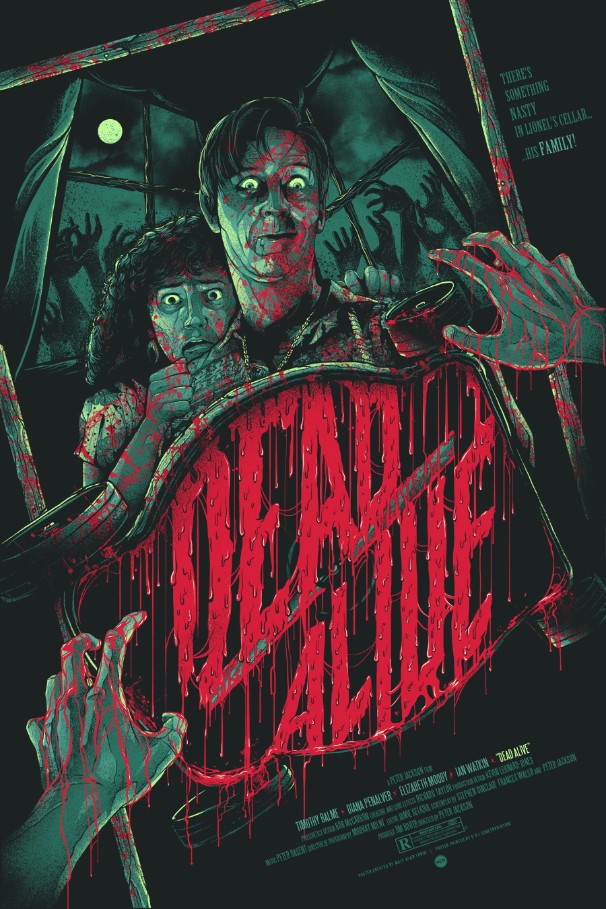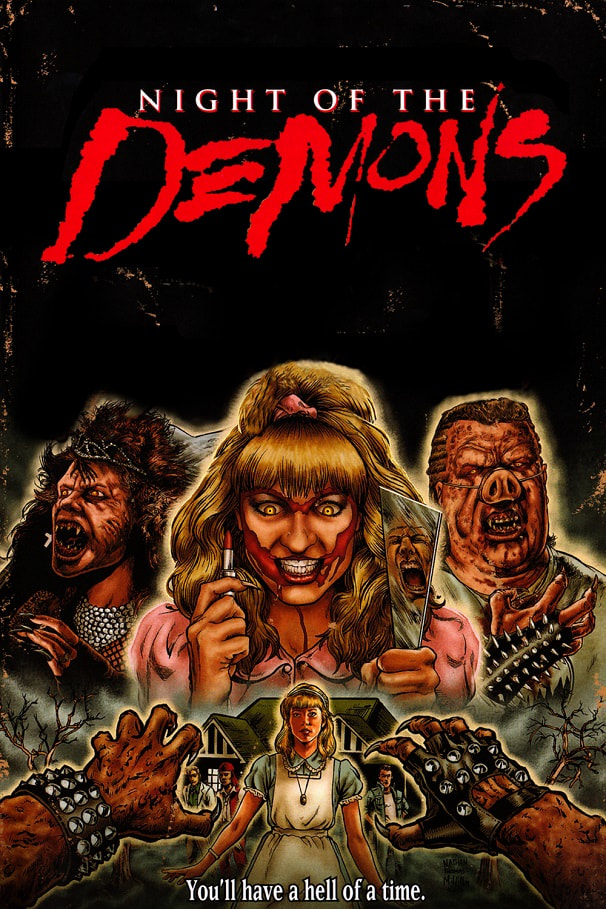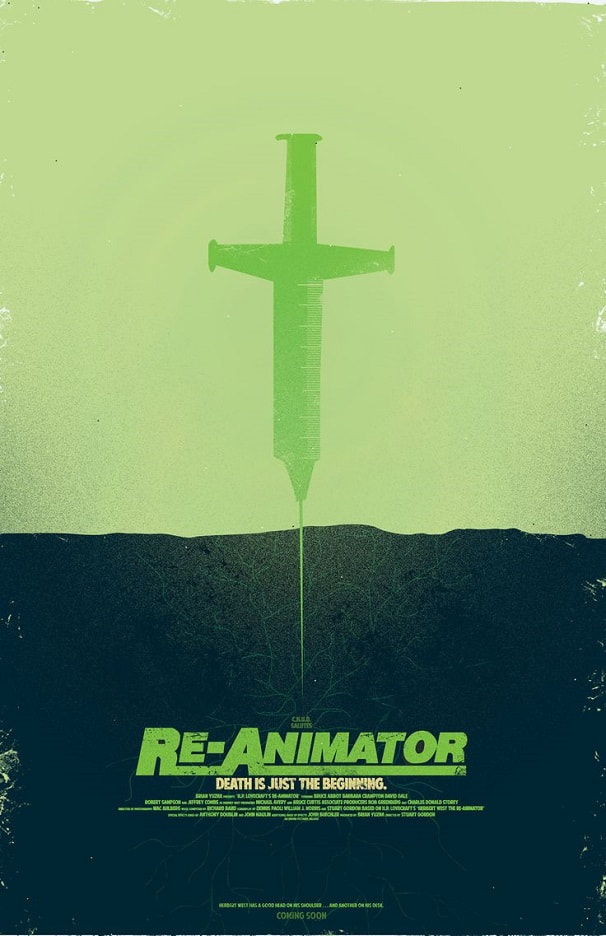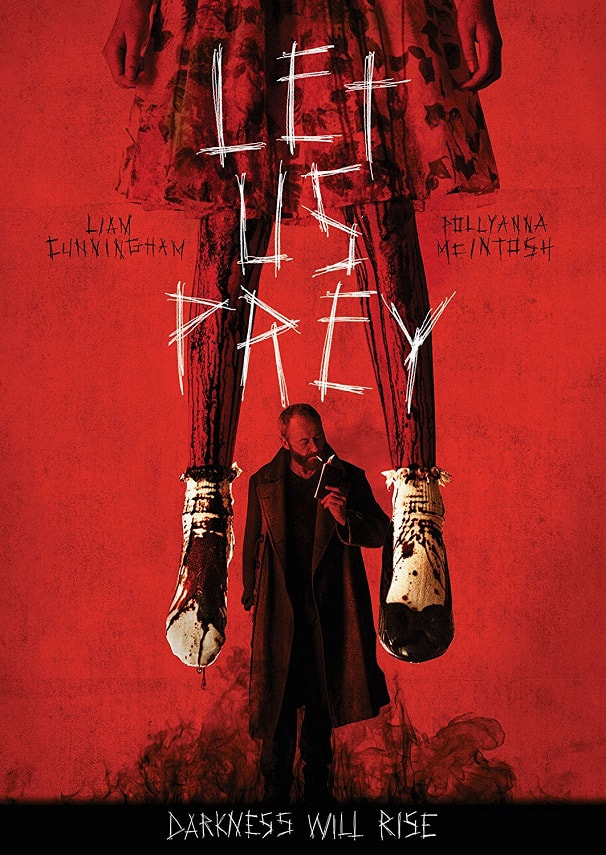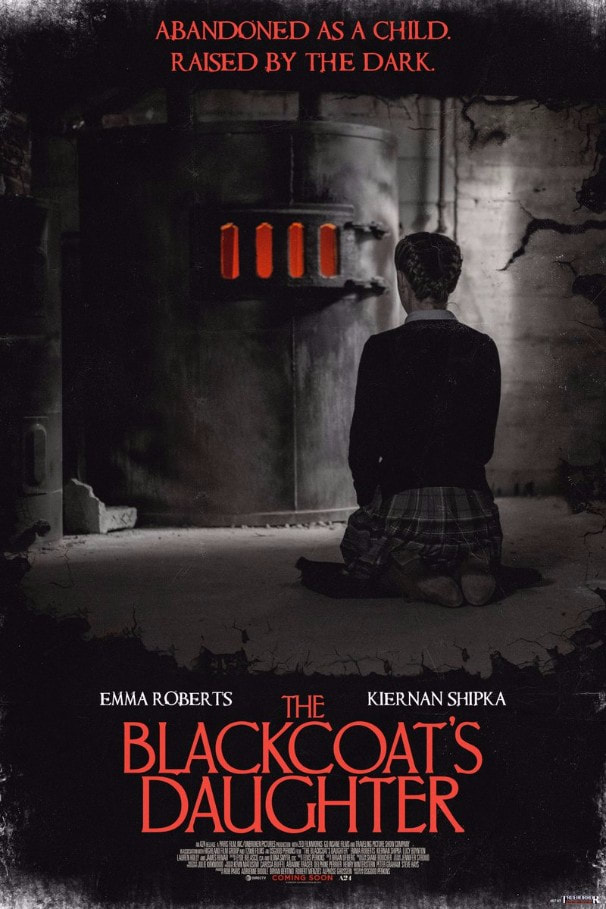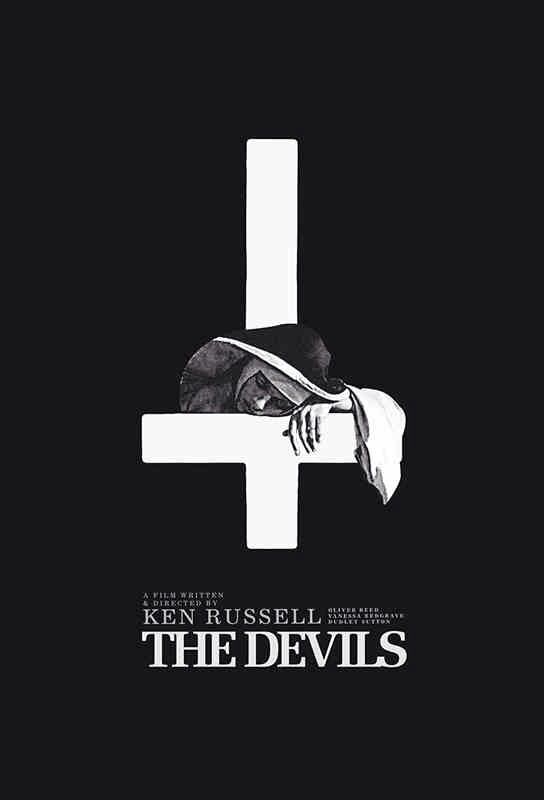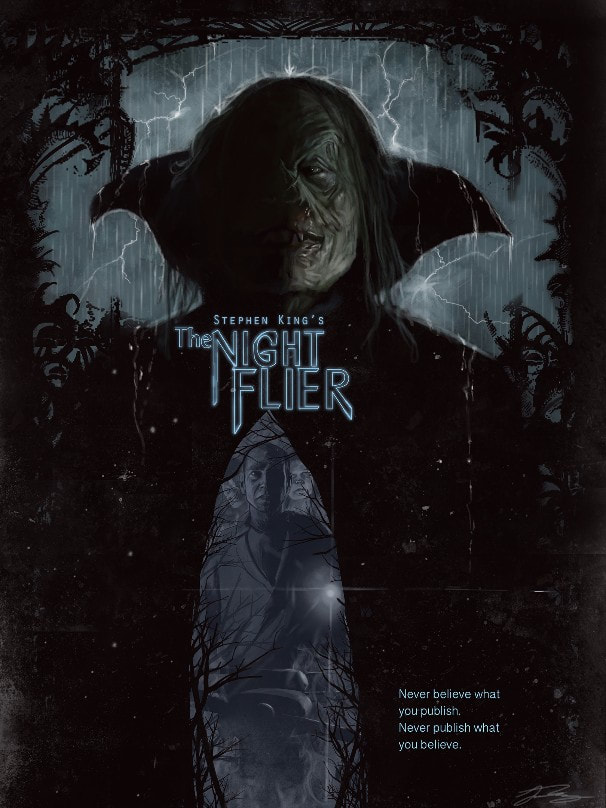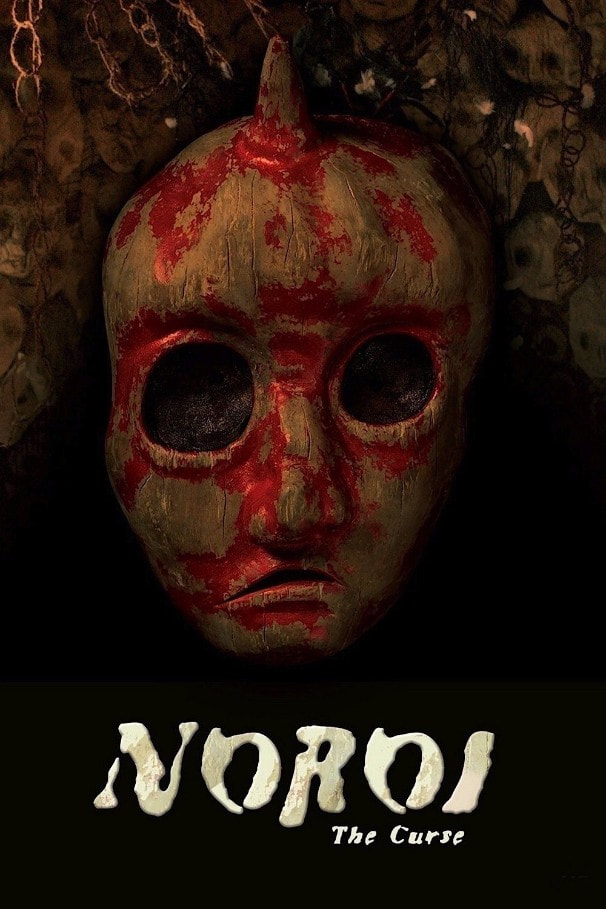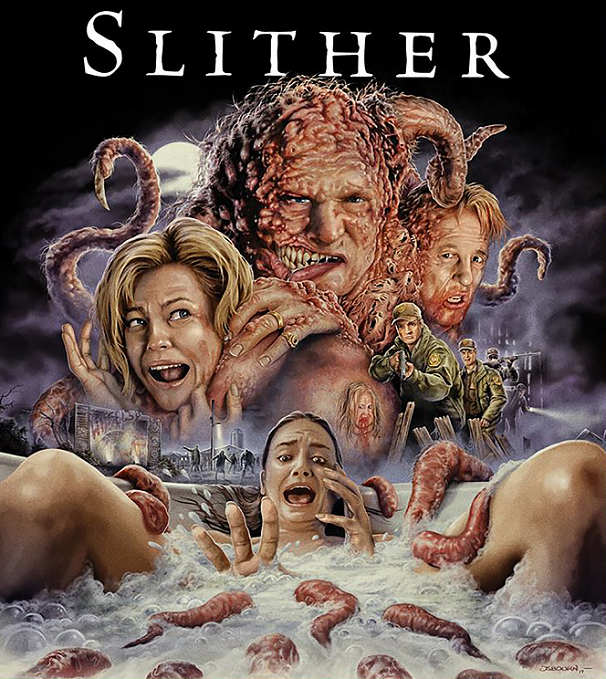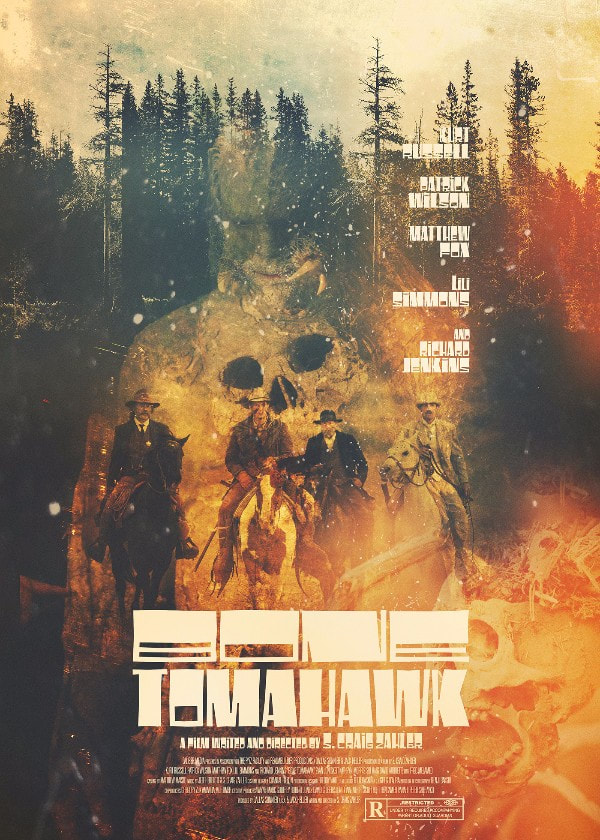|
Yet another slice of Kiwi goodness, Braindead (more tamely retitled Dead Alive, thanks to some rights issues) is an insane piece of horror filmmaking from the suburbs of New Zealand. Let me emphasize the “insane” bit: this is not a movie for fans of understated haunted house flicks or traditional ghosts and under-the-skin fare. Braindead is a geyser of viscera and mayhem that is constantly and rapidly topping itself with scene after scene of gore and mayhem, and is about as politically incorrect as horror movies can get without getting maliciously crass. Give it about twenty minutes and you’ll see why this is such a feat. Braindead begins with a cold-open in the canyons of Skull Island, where the mythical (and, indeed, fictional) Sumatran rat-monkey has been tracked down and caught for the first time. It is shipped away to be displayed in a zoo. A stop-motion animated atrocity that probably didn’t look any good then, the rat-monkey is where some viewers will jump off. Those that stick around will be rewarded with Lionel (Timothy Balme). He’s a teenager, who looks more like twentysomething, smitten with Paquita Maria Sanchez, a local shopkeeper’s daughter, but he is unable to so much as ask her on a date thanks to his domineering mother (Elizabeth Moody). The two plotlines intersect when Lionel asks her anyway, and the two head to the local zoo, where Lionel’s mother follows them to spy. She strays a little too close to the rat-monkey exhibit and is bitten, setting off a chain of events that just has to be seen to be believed. I cannot stress the insanity of this movie enough, but suffice to say that you’re going to see at least one sequence you never thought possible. There are some familiar ideas, like ominous tarot readings, midnight cemeteries, and zombies, thrown into the mix; but they’re nothing compared to the dinner scene, the priest, the animal stimulants, the baby stroller, and the siege of Lionel’s mother’s Victorian mansion, where all bets are definitively off and someone sentient intestines admire themselves in a mirror. Does that sound like I just spoiled a major surprise? I haven’t. There’s so much going on by that point, and so much still to happen, that you’ll probably forget all about it. Braindead takes the cake as the most over-the-top movie I’ve seen, like The Evil Dead movies gassed silly with the jenkem of Hausu and Happiness of the Katakuris. It’s also unquestionably the goriest movie I’ve ever seen, even accounting for Aftermath and Inside (A’linterieur)--so if you’ve ever wondered what it’s like to go on a drug-fueled killing spree with, say, a lawnmower, this is your perfect simulation. And who, you might be wondering, directed this still-banned-in-several-countries movie? Peter "Lord of the Rings" Jackson. -Brian L.
0 Comments
Night of the Demons is a treasure. Specifically, buried treasure--it’s another entry in the long line of ’80s horror movies about teens getting their comeuppance when they take the party to a haunted locale, but all the elements that would normally come into question for critical analysis are just dressing with this movie. The real attraction is its unabashed Halloween spirit, a holiday gusto that surges out of the screen from the opening credits: an animated sequence like something out of Scooby-Doo without the Mystery Gang. The cast are Cabin in the Woods archetypes all, their unique traits and differences are mapped out in no uncertain terms. They’re preparing for a night at Hull House, an abandoned and supposedly haunted mortuary that was the site of a grisly murder-suicide, and…. We know this drill. The movie really get started when an invisible spirit zooms, Evil Dead-POV style, out of the basement furnace and up the stairs, hauling us from one Halloween-drenched sequence to the next, dropping one-liners left and right--“Eat a bowl of fuck!” being only one of the movie’s many choice selections of dialogue--and images you couldn’t erase with a brand. There’s ’80s horror legend Linnea Quigley bending down to grab some dropped candy; a strobe-light dance sequence with legendary Goth-chick-turned-flesh-craving-demon Angela, whose visage adorns the movie’s famous original poster art; and, of course, the disappearing lipstick. You’ll know it when you see it. There’s also a perfectly macabre little subplot involving an old couple and their mismatched outlooks on Halloween, culminating in a sharp satire of a certain holiday myth. Night of the Demons is a blast. You can smell the rotting pumpkin guts and taste the chocolate smeared across the script, and for once, its sequel is equally inspired despite a new director and slightly different writers--so feel free to extend your stay at Hull House a little while more, if so inclined. “Happy Halloween, dear!” -Brian L. H.P. Lovecraft is a notoriously difficult writer to adapt because his stories lack the visceral grit or overt relatability that characterize later, more bankable authors like Elmore Leonard and Stephen King. His fiction tends to feature highly rational people, often scientists, confronted by total irrationality, which drives them to madness through the simple fact of their existence rather than the number of tentacles on their unutterable bodies or syllables in their unspeakable names. This is a point most adaptations don’t seem to grasp--it’s the offense to our sense of cosmic order, and not the offender, that constitutes Lovecraftian horror. Stuart Gordon doesn’t give a fuck. His three adaptations of the Rhode Islander’s work (and a half, if we’re counting his Masters of Horror segment for “Dreams in the Witch-House”) miss the point and yet stand as the very best Lovecraft movies we have, each a ferociously entertaining and fun movie in its own right. Of the three, Re-Animator is the very best, a re-imagining of one of Lovecraft’s (ironically) least Lovecraftian stories, “Herbert West - Re-Animator.” It was lauded on release, remained a cult horror staple through the years, and has rightfully entered the horror pantheon as one of the best-loved horror movies of the 80s with Arrow Video’s recent deluxe edition, featuring the 86-minute theatrical cut and the 106-minute extended cut, available for the first time in North America. It’s a big deal. Ostensibly a mad scientist story, it follows the brilliant Herbert West (Jeffrey Combs) from his botched tenure in Switzerland to the fictional Miskatonic University of New England, where he intends to continue his experiments with reanimation: bringing the dead to life. A couple of things get in his way: friction with Miskatonic professor Dr. Carl Hill (David Gale), and medical student roommate Dan Cain (Bruce Abbott), who isn’t much of a fan of West--especially after he kills his cat Rufus. West and Cain are forced into an uneasy partnership when Dr. Hill’s lust for Cain’s girlfriend Megan Halsey (the incredible Barbara Crampton) goes too far. The movie catches its tempo the moment Rufus is resurrected, and never stops: it’s a blistering ride through zombies, decapitations, nudity, murder, and more, summing up to a near-perfect horror movie and an indispensable October viewing. -Brian L. On the surface, Let Us Prey bears a few similarities to Last Shift, released the same year. Both movies follow troubled cops in unfriendly environments, which both happen to be police stations, but Let Us Prey has the upper hand in sheer madness. Officer Rachel Heggie (Pollyanna McIntosh, of The Woman, Tales of Halloween, and most recently The Walking Dead) is stuck on overnight duty at a police station in the unpleasant company of nymphomaniacs, drunk teenagers, and a sinister older gentleman in a dapper overcoat (Liam Cunningham). As the night goes on, it becomes clear that something isn’t right, and things go from bad to worse, and then get even worse. The building in Last Shift is haunted by the ghosts of a cult that worshiped something older and more evil than Satan, although their scare tactics are indistinguishable from your usual Satanist hijinks (however well-staged). The building in Let Us Prey isn’t haunted, per se, but all police stations have a certain mood after dark--one of loneliness, of dark and wet; and they usually hang onto the smell of puke, sweat, and cigarettes. It’s not hard to imagine that stench just looking at the dimly-lit interiors of Let Us Prey, but they take on a new dimension when Liam Cunningham stops by to visit. He doesn’t have a name other than Six, which is the number of the cell Officer Heggie locks him into, but coupled with the opening scene--where he appears amid the chaotic ocean spray and ancient rocks of the Irish coast, coat swishing and a murder of crows circling overhead--it’s hard not to imagine him as some devil, if not the devil. Other than smoke, glower, and growl some ominous dialogue, he doesn’t do much other than brood in his cell, like a cross between Hannibal Lecter and The Exorcist’s possessed Regan, but he doesn’t need to. His mere presence seems to incite, or elicit, the very worst in those trapped with him at the police station--and for Game of Thrones fans more accustomed to seeing Cunningham play devil’s advocate as Ser Davos than plain old devil, watching him sink his teeth into this role a delicious treat all on its own. As the traumas, psychoses, and Biblical mayhem spiral out of control, Officer Heggie, like us, is drawn toward the cool, dark mystery of his character, the black hole around which the movie turns, inviting the viewer to rewatch after rewatch. -Brian L. “During the dead of winter, a troubled young woman embarks on a mysterious journey to an isolated prep school where two stranded students face a sinister threat from an unseen evil force.” That’s Google’s synopsis. Emma Roberts plays the “troubled young woman” Joan, while the “two stranded students” are Kat (Kiernan Shipka) and Rose (Lucy Boynton). Joan is Kat and Rose are stranded at their Catholic prep school, which just let out for winter break, because Kat’s parents seem to have vanished en route to pick her up. Rose’s didn’t know school was getting out earlier than Friday. It’s decided that Rose, a senior, will watch over freshman Kat until Rose’s parents arrive to take her away and Kat’s situation is sorted out. The mood is thick and slow as the two storylines dance around each other. For a while, it seems as if they won’t ever meet, but give it time--the movie has to build up a head of disquieting imagery first, so that when things finally begin to fall into place, they do so with the suddenness of an axe striking on concrete. The Blackcoat’s Daughter will just be slow for some; but for others, it’s a movie that positively oozes dread, laying it on as heavy as oil as we wait for an early spark of intrigue--Rose coolly informs her trustee that the school was once the site of some illicit devil-worshipping--to ignite. And it does. The Blackcoat’s Daughter relies on atmosphere and structure to scare us more than it uses gore, although if that’s what you’re after, you’ll find it here too. Like The Witch and The Babadook, The Blackcoat’s Daughter is a Bechdel-approved, psychologically-intensive, bonafide and exemplary piece of atmospheric modern horror, and among the top ten must-sees of the genre this year. - Brian L. Ken Russell’s The Devils may be the biggest horror movie ever made--not in sales, not in cultural impact, and not even in notoriety, but purely in size. It’ll hit you about halfway in, all at once, how huge The Devils is, and you’ll sit there incredulous of its obscurity and in awe of its self-appointed, but well-earned prestige. Wikipedia’s summary gives us the structure of the movie: “The Devils is a dramatised historical account of the rise and fall of Urbain Grandier, a 17th-century Roman Catholic priest executed for witchcraft following the supposed possessions in Loudun, France. [Oliver] Reed plays Grandier in the film and Vanessa Redgrave plays a hunchbacked sexually repressed nun who finds herself inadvertently responsible for the accusations.” And that’s only the bones of it. Watching The Devils is like watching some old-Hollywood mega-epic--think The Ten Commandments; Ben-Hur; Gone With the Wind--shrunken down into a vat of grindhouse trash and left to dry on a stack of softcore erotica. Oliver Reed and Vanessa Redgrave prove themselves actors of the first order, instilling humanity and gravitas in characters that are really just bombastic archetypes, trouncing and crawling and brooding amid eye-wateringly lavish sets. There’s a scene of Redgrave’s Sister Joanne of the Angels simply walking toward the camera, her slumping figure locked in center-screen as she moves through the monastery, that is both sublimely unsettling and an example of the film’s ability to transform the simple into the extraordinary through little more than willpower. Characters unspool grandiloquent monologues to cathedral-like silence or to raving, stadium-sized audiences; they have asides, revealing their innermost motivations to the viewer as if they’re on a stage rather than in front of a camera, feeding into the delicious artifice of the whole experience. Characters indulge in the most repugnant of cruelties and the most debaucherous of pleasures with equal zeal amid a narrative that careens from scenes of torture to scenes of prostitution and bacchanalia; from nightmarish fantasies of the “rape of Christ” to passages of serious religious introspection. The Devils has been cut, censored, banned, protested, slapped with an X rating. It’s been scorned and admired. It’s been buried and forgotten, dug up and reevaluated. Nothing like this movie has ever been made. Nothing like it will probably ever be made again--and now it’s streaming on Shudder. -Brian L. Stephen King gets a bad rap, but not always unjustly. His endings are either rushed, sloppy, or too pat--sometimes all three at once, as Mike Flanagan’s otherwise superb adaptation of Gerald’s Game makes clear with its patch-job ending, lifted directly from the novel. But I can assure you, The Night Flier does not have this problem. As easy as it is to rag on his novels, we often forget that King’s short stories--Apt Pupil, The Mist, and of course, The Night Flier--are where the magic lies, and that the movies based on these make for lean, dirty, and engrossing horror movies, to which The Night Flier is no exception. Centered on a corrupt journalist on the trail of a serial killer who quite literally flies by night, draining his victims of blood and take back off into the sky (in a black Cessna Skymaster--settle down, now), it’s a small-scale mystery with more ambition than one might think. Like Nightcrawler, The Night Flier is about fundamentally corrupt people pursuing their passions to whatever dark ends they lead. Ferrer plaus Richard Dees, a senior journalist and mainstay at a National Enquirer-esque newspaper who lives and works by one of those haunting, haunted little turns of phrase King excels at crafting: “Never believe what you publish, never publish what you believe.” It’s an axiom that worms in and out the movie, its significance shifting and growing in a remarkably accurate recreation of King’s technique on the page once the competition heats up between Dees and upstart reporter Katherine Blair (Julie Entwhistle), both intent on tracking down the enigmatic Night Flier and getting the scoop. Whether or not The Night Flier is as smart as it thinks it is, or as it could be, nothing beats watching Miguel Ferrer sink his teeth into the bitter and cantankerous role of Dees, or watching the tables turn so quickly and satisfyingly on him. Obsession, betrayal, and bloodshed abound, culminating in an ending worthy of The Twilight Zone at it pitch-black best. The Night Flier is an eerier, more entertaining, and more complete movie than many of its bigger-budget peers can claim. It doesn’t need a massive cast or too many flashy setpieces to get by: all the movie needs is a wonderfully seedy turn from the late Miguel Ferrer, and a gobsmack of an ending to qualify as a truly underappreciated gem of horror. -Brian L. Whether you’re more of a Pulse/Dark Water fan than a Ju-On/Ringu person, you can recognize the hallmarks of Japanese horror from miles away: loneliness, cramped spaces, and a preoccupation with creepy children are fixtures of the landscape. Oh, and curses, hexes, maledictions--any power or entity too ancient and powerful to combat by conventional means is a staple of the Japanese brand of horror, as are small casts and limited dialogue. More often than not, movies like Audition, Marebito, Tetsuo: The Iron Man, and so forth are character studies that use their limited casts and settings to intensify the horror of isolation and vice versa, often in reflection of the ills of Japanese society. By those rules, Noroi: The Curse barely qualifies. It’s a movie that seems to have read the book on J-horror and decided, “nah.” A spiritual ancestor to The Wailing (and, of course, The Blair Witch Project), Noroi: The Curse is early example of what found-footage horror could have been: patiently, methodically, and with a sense of naturalistic dread so thick you could cut it, Noroi connects the dots between a series of seemingly unrelated incidents all across Japan, spanning the nation and reaching into the long and troubled history of the country as it amasses a headcount of twenty-five central characters (!) and subverts nearly every J-horror trope along the way. Most of the movie occurs in daylight, and the children, for once, are not to be feared. But in order to preserve Noroi’'s singularly terrifying way of unfolding, I’ll abstain from providing any further plot details. Suffice to say that this is a mystery worth the time and effort to see to the end. It doesn’t mince words and it doesn’t shy away from hard answers, but you might just wish it had. - Brian L. In the slimy, madcap vein of Night of the Creeps, Slither is an early diamond-in-the-rough from James Gunn, the guy behind Super and both Guardians of the Galaxy movies. Neither as mean-spirited as the former or as big-budget as the latter, Slither is built on a classic love triangle between Nathan Fillion’s straight-shooting Chief Bill Pardy, Michael Rooker’s Grant Grant (yes, that’s his name), and Elizabeth Banks as Pardy’s dream woman/Grant’s wife Starla, Slither follows Grant Grant’s transformation into an oozing, tentacled monster following a late-night encounter with an alien slug in the woods. Other than the big names listed above, Jenna Fischer essentially brings her role on The Office to the police department of Wheelsy, South Carolina; Lloyd Kaufman, founder of Troma Films, is a “Sad Drunk” in a couple of scenes; and even Rob Zombie, of all people, is in the movie, playing a role you might miss if you blink. Both an affectionate throwback to the horror movies of the fifties and an enthusiastic update on all the bold-type sci-fi tropes of the era, Slither is a radioactive vat of crash-landed meteors, mysterious glows, gelatinous alien lifeforms, mind control, blood, guts, and slime, capped with an explosive finish and propped up on Gunn’s imagination and the shoulders of a committed cast. Brian L. Horror westerns are a rare breed, although it only takes a single viewing of Bone Tomahawk to see that they’re wildly compatible genres. Both rely on silence, mood, and strong characters. Both are prone to hyperbole and aggrandization, to stylistic indulgence and the complications of morality. The very best of both worlds rely on ambiguity, a boon to these qualities; and on the more obvious end of things, typically end in bloodbaths and grand proclamations. Bone Tomahawk recognizes all these points of synergy and simply connects the dots. The cast is stacked for a good time: Kurt Russell, Patrick Wilson, Matthew Fox, and Richard Jenkins make up our ragtag core of a sheriff, his deputy, the town foreman, and a local womanizer/sophisticate on the trail of a mysterious and lethal tribe of “troglodytes” who kidnap the town doctor, and Patrick Wilson’s wife, played by Lili Simmons. The movies goes to some lengths to sever the ties between the troglodytes--brute, snarling, neanderthalic creatures, like orcs with less armor and no ethics--and the Native American population, going so far as to cast a Native American actor in the role of a Native American local with the sole purpose of pointedly distinguishing the monsters from the men. Freed of what could have been a problematic implication, Bone Tomahawk’s troglodytes are some of the most frightening villains dreamed up for a horror movie in a long time, not so much for their appearance but for their terrifying efficiency. Their mere presence on screen is an assurance that whatever characters you consider indispensable are quite the opposite--so, depending on what kind of mileage you get out of westerns, it could be a good or bad thing that they’re rarely around. It would be a much, much shorter movie if they were. Most of the film is occupied by writer-director S. Craig Zahler’s snappy, sub-Tarantino dialogue, offering us a chance to get to know these people before they’re mown down by the troglodyte’s signature weapon, and know them well; but whatever your take on dialogue-driven movies, there is a scene toward the end of Bone Tomahawk that will decide for you how much of the troglodytes you really want to see. Trust me: you’ve never seen a man die like that. -Brian L. |
"Curtains" is where you can catch movie reviews by the Metal Lifestyle staff.
|
